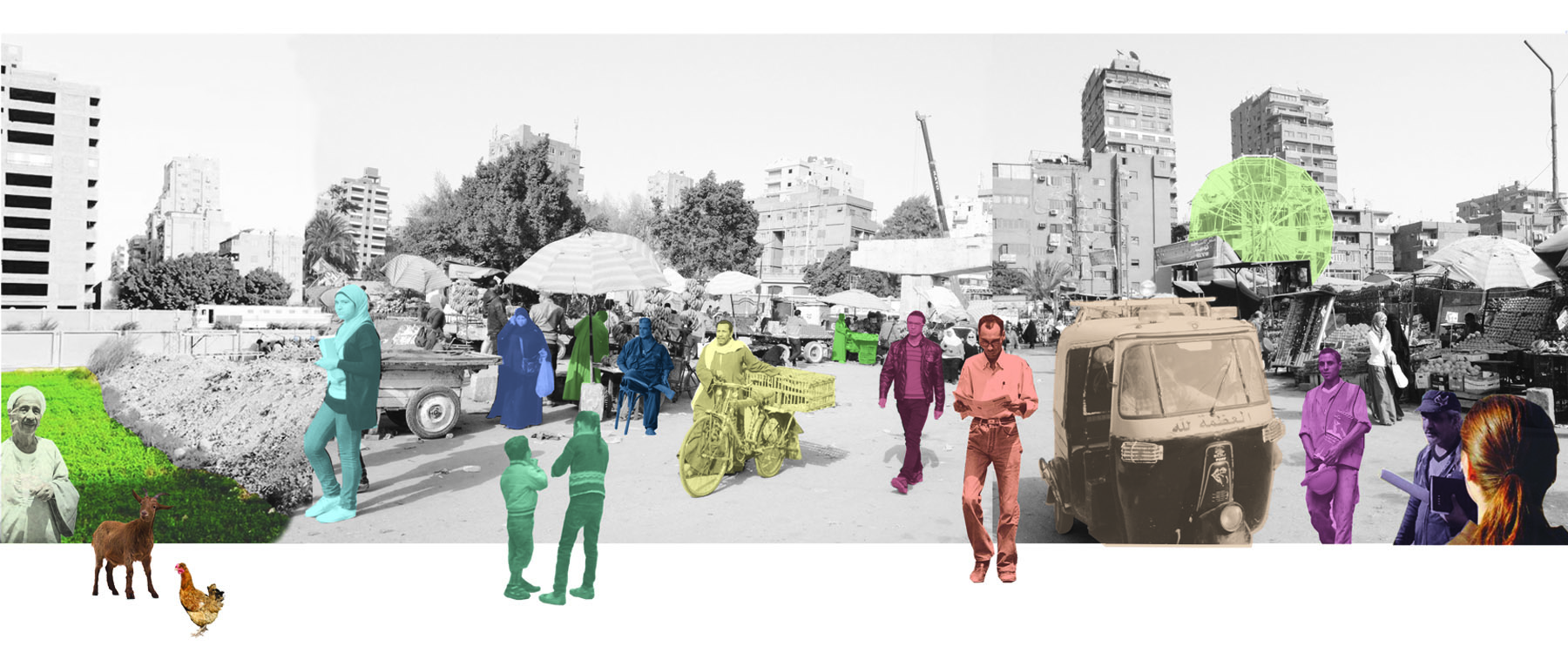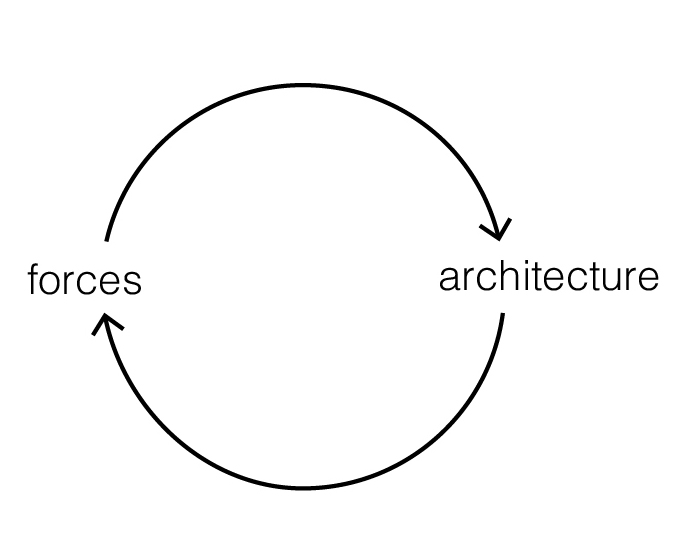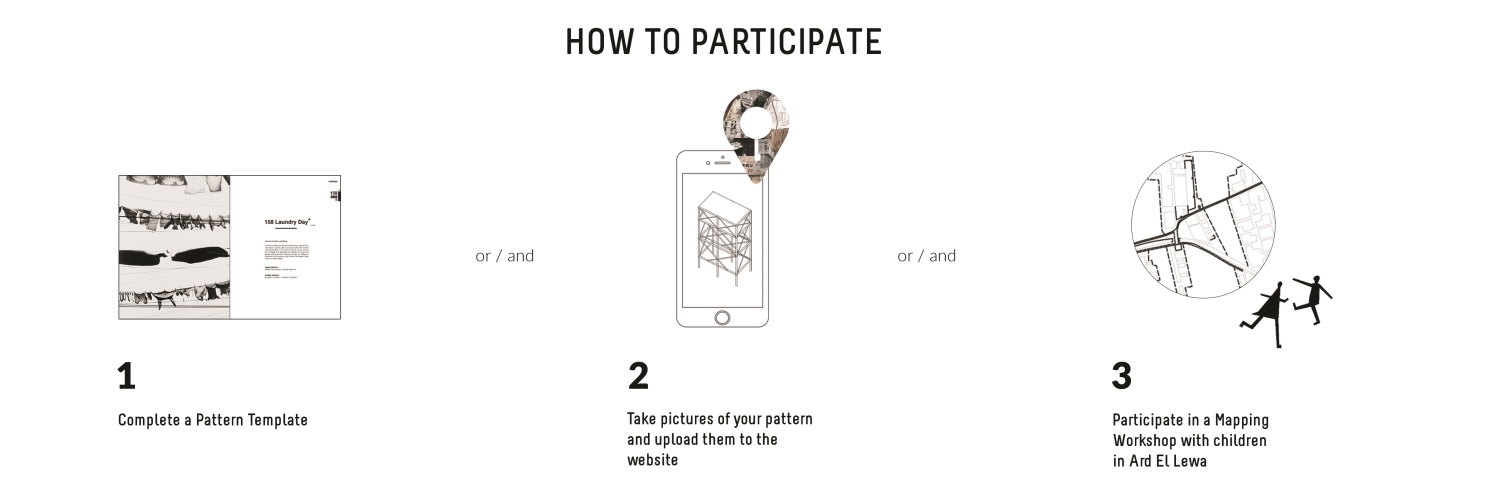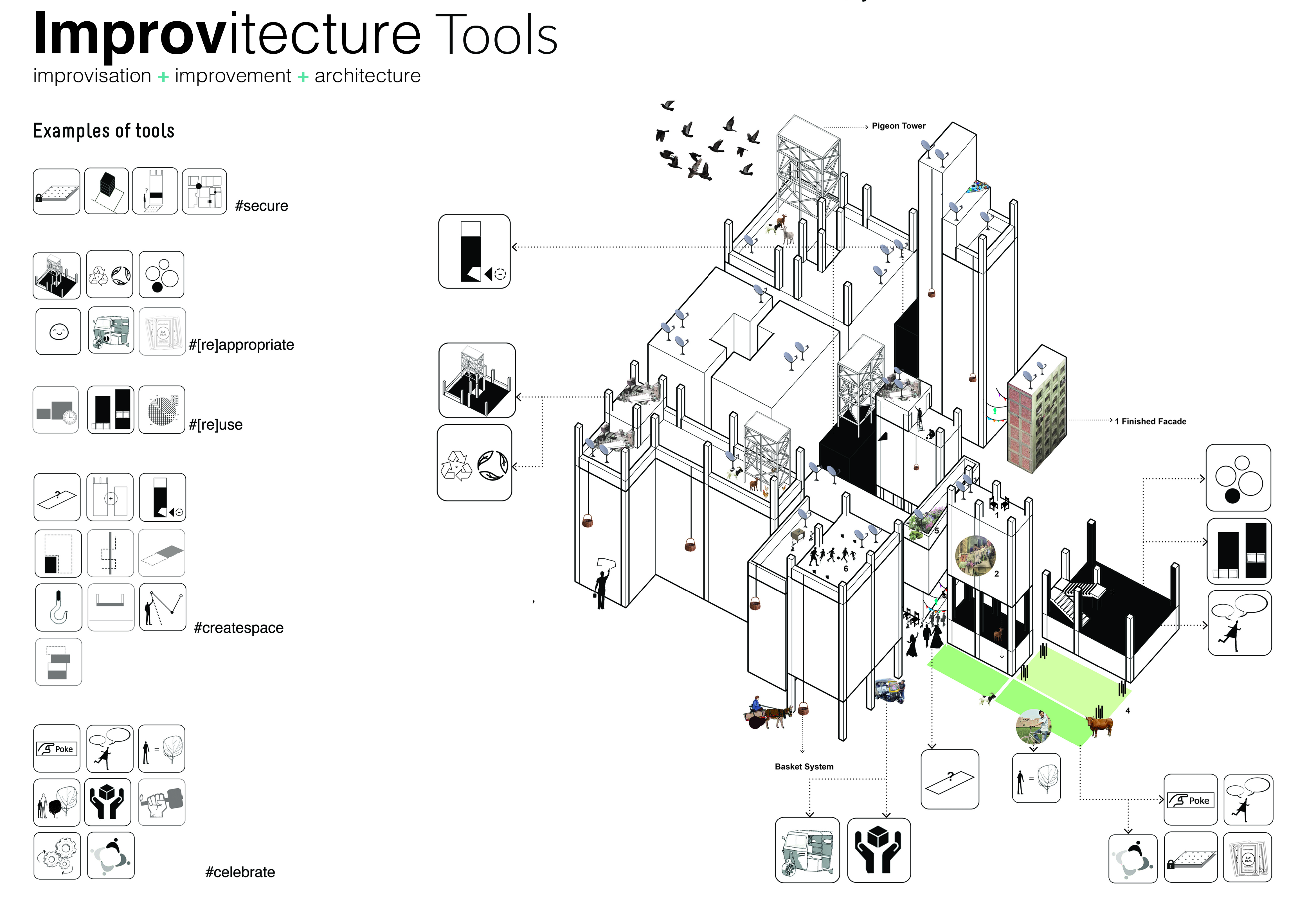
Through the case study of Ard El Lewa, the purpose is to create an [in]formal Pattern Language manual, which serves as a guide for community members, designers, planners and officials to improve informal settlements and embed productive green spaces, sustainability, communal responsibility and ownership in the resident‘s daily life.
[in]formal Pattern Language invites experts, architecture students and community members in Ard El Lewa to take part in this on going project through the website, workshop, exhibition and publication.
Inspired by Christopher Alexander’s A Pattern Language community members, architects and architecture students should collaboratively break down the complex physical reality of informal settlements and their urban narratives into patterns. Alexander's A pattern language offers a vocabulary of elements which can make people's experience in towns, neighborhoods and buildings more explicit and easy to understand, thus enabling them to shape the development of their environment with their own hands. According to Alexander "each pattern is a morphological law which establishes a set of relationships in space".
Once a pattern is identified, it will then be analyzed and combined with a set of improvitecture tools and in-situ design solutions, which optimize it and allow for a more sustainable built-environment. This process should link people’s microscopic needs and narratives to complex environmental and urban concerns.

Improvitecture © (improvisation + improvement + architecture) is as a catalyst for development and the architecture from and for informality.
Architecture is by definition a physical manifestation of ideas and needs. It gives form to forces and formalizes forces that contributed to its creation. By looking through the lens of the architect trained to a become problem solver with an interdisciplinary educational background, hidden orders of informality and driving socio-cultural and economic forces can be uncovered, represented and thus redefined.
Improvitecture acknowledges informality as a typology and the value of tactile practices, and therefore attempts to change perception from unplanned and informal to self-organized and improvised.
It creates a platform, which allows planning and improvisation to co-exist and a constant exchange of knowledge between community members and architects. Improvitecture redefines traditional borders between architect, user and client, planned and improvised, designed and semi-designed, complete and incomplete and finally formal and informal. In self organized communities the architect has to morph from being an agent of change to a mediator, an interpreter, an improvitect and finally to an invisible choreographer of forces. This is not to devalue the role of architects but rather to imply that a transformation needs to occur both in the role of users and architects.

As the manual is an assembly of patterns, it should combine top-down and bottom up perspectives, propositions and evaluations. The thesis therefore attempts to engage participants from different backgrounds, gender and age range. This diagram elaborates how potential participants contribute to the manual. Each tool is tailored to its user group.
Site Analysis and observation
This stage is undertaken by the invisible choreographer and includes a closer site analysis, confirmation of the photography and mapping tours to be followed in the workshop and collaborating with local partners: Artellewa, CLUSTER and Schaduf.
Interviews
Interviews will take place in the market, where most of the community members are present such as street vendors, house wives, delivery men, toktok drivers, pigeon tower carpenters and swings owner.
Pattern Template
Architecture students and experts currently involved in the field of informal settlements, community engagement and right to housing will participate through completing a pattern template designed by the thesis author, the invisible choreographer who guides the flow of information.
Photography and Mapping
Children from Ard El Lewa will discover patterns through photography and mapping of their community in the framework of a workshop. With the knowledge and information acquired from interviewing community members, the invisible choreographer should guide the workshop.

by Nada Nafeh
A thesis presented to the University of Waterloo
in fulfillment of the thesis requirement for the degree of
Master of Architecture
Waterloo, Ontario, Canada,
© Nada Nafeh 2015
© Improvitecture 2015